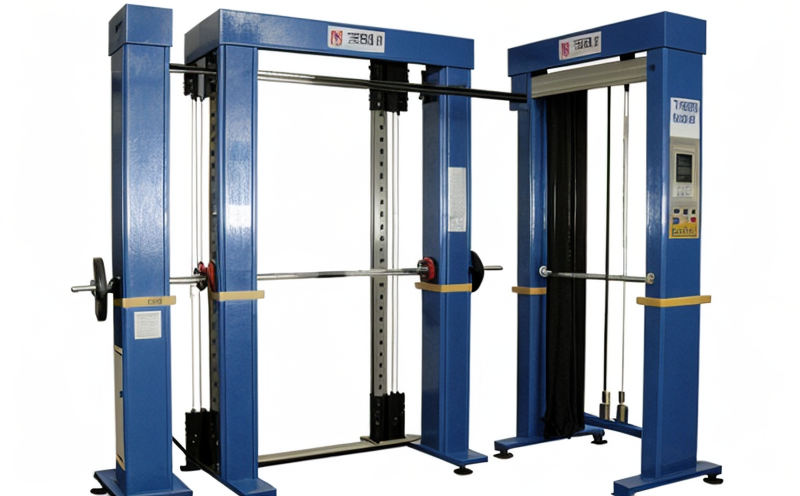AATCC 200 Fabric thickness testing method
The AATCC Method 200 is a widely recognized standard used to measure the thickness of fabrics. This method provides a standardized approach ensuring consistent results, which is critical for quality control and compliance in the textile industry.
Textile thickness plays a crucial role in determining the durability, comfort, and performance of fabric products. A thicker fabric may offer better insulation or protection against harsh environmental conditions but can also be heavier and less flexible. Understanding the exact thickness helps manufacturers tailor their products to meet specific market demands and regulatory requirements.
The AATCC 200 method involves precise measurement techniques that account for various factors such as the type of fabric, its composition, and intended use. For instance, a thinner fabric might be preferred in lightweight clothing, while a thicker fabric could be essential for heavy-duty industrial applications or winter wear.
To ensure accurate measurements, it is important to follow all the steps outlined in the standard meticulously. This includes selecting appropriate measurement tools, preparing specimens correctly, and conducting tests under controlled conditions. The testing environment should be free from external influences that might affect the readings, such as temperature fluctuations or humidity variations.
The AATCC 200 method allows for both manual and automated thickness measurement techniques. Manual methods typically involve using calibrated micrometers to measure specific points on the fabric sample, while automated systems use advanced technology to provide more comprehensive data by measuring multiple points across the entire specimen.
Preparation of specimens is another critical aspect of this testing procedure. Specimens must be cut according to specified dimensions and prepared in a way that ensures they represent the actual fabric as closely as possible. This might involve washing, drying, or conditioning the samples before measurement to simulate real-world conditions under which these fabrics will perform.
The accuracy and precision of AATCC 200 measurements are paramount for ensuring consistent quality across production batches. By adhering strictly to the method's guidelines, manufacturers can maintain high standards throughout their processes, leading to superior product performance and customer satisfaction.
Understanding the implications of fabric thickness goes beyond just knowing numbers; it involves comprehending how different thicknesses affect various properties like breathability, drape, and wear resistance. For example, a thicker fabric may offer better insulating qualities but could also be less breathable compared to its thinner counterparts.
| Key Considerations | Description |
|---|---|
| Measurement Points | The method specifies multiple points on the sample where thickness should be measured. |
| Sample Preparation | Involves conditioning samples to standard conditions before measurement. |
| Data Interpretation | Analyzed using statistical methods for consistency and accuracy. |
This method is essential not only within the textile industry but also in related sectors like fashion, home textiles, automotive upholstery, and more. By providing accurate thickness data, this standard helps ensure that fabrics meet specified performance levels and regulatory requirements.
Accurate fabric thickness measurements are vital for optimizing manufacturing processes, enhancing product quality, and ensuring compliance with international standards such as AATCC 200. Whether you're a manufacturer looking to improve your production line or an R&D engineer seeking precise data for new developments, mastering this technique can significantly enhance your operations.
Scope and Methodology
- Select appropriate specimens based on the fabric type and intended use.
- Condition the samples to standard temperature and humidity levels before testing.
- Choose suitable measurement instruments calibrated according to the method's requirements.
- Measure thickness at designated points on each sample following precise procedures.
- Analyze all collected data statistically for consistency and accuracy.
The AATCC 200 standard covers various types of fabrics including woven, knitted, and nonwoven materials. It specifies the preparation and conditioning of specimens, the selection of measurement instruments, and the actual process of taking measurements at specific locations on each sample. Compliance with these guidelines ensures reliable results that are comparable across different laboratories.
The methodology also includes details about how to handle any anomalies or variations in the data obtained during testing. This helps maintain consistency and accuracy even when dealing with more complex fabrics or unusual specimen conditions.
Eurolab Advantages
- State-of-the-Art Equipment: Equipped with advanced measurement instruments that adhere strictly to international standards like AATCC 200.
- Expertise and Experience: Our team of highly qualified professionals has extensive experience in textile testing, ensuring accurate and reliable results.
- Comprehensive Reporting: We provide detailed reports that include all relevant data points along with interpretations based on our expertise.
- Rapid Turnaround Times: Efficient processes allow us to deliver timely results without compromising quality.
- Custom Solutions: Tailored services for unique testing requirements, ensuring we meet your specific needs effectively.
- Regulatory Compliance: Ensuring all our tests comply with relevant international standards and local regulations.
At Eurolab, we pride ourselves on delivering exceptional service backed by years of experience in textile testing. Our state-of-the-art facilities and highly skilled team make us the preferred choice for businesses across sectors ranging from fashion to automotive upholstery.





